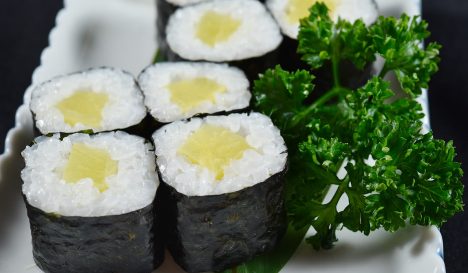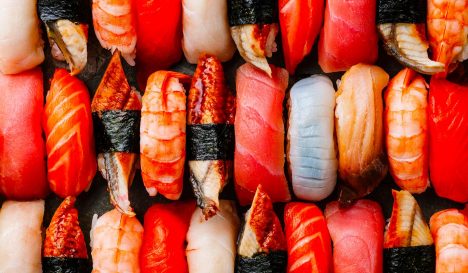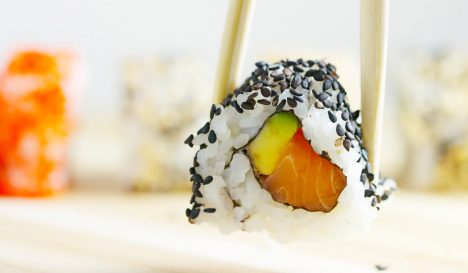Sashimi
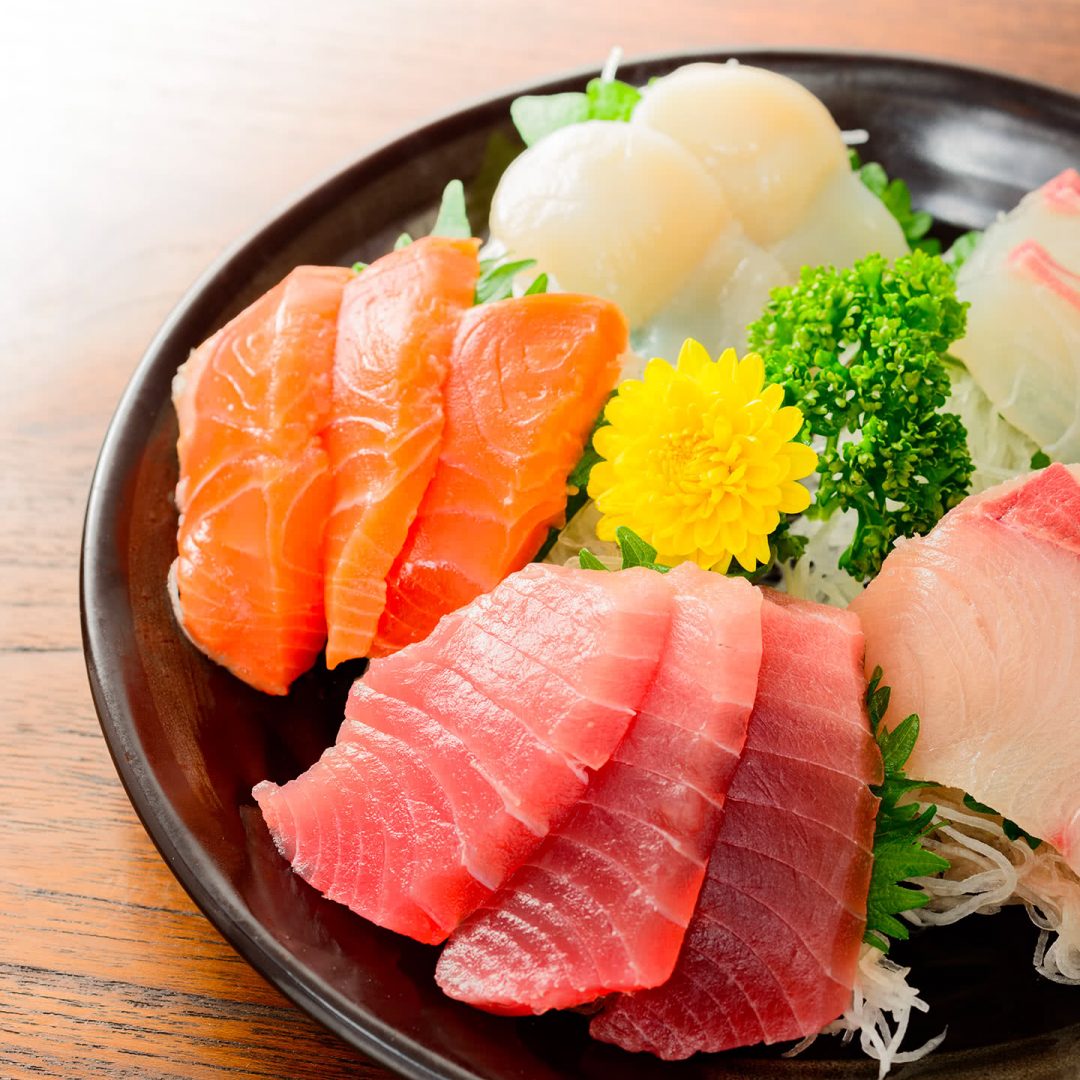
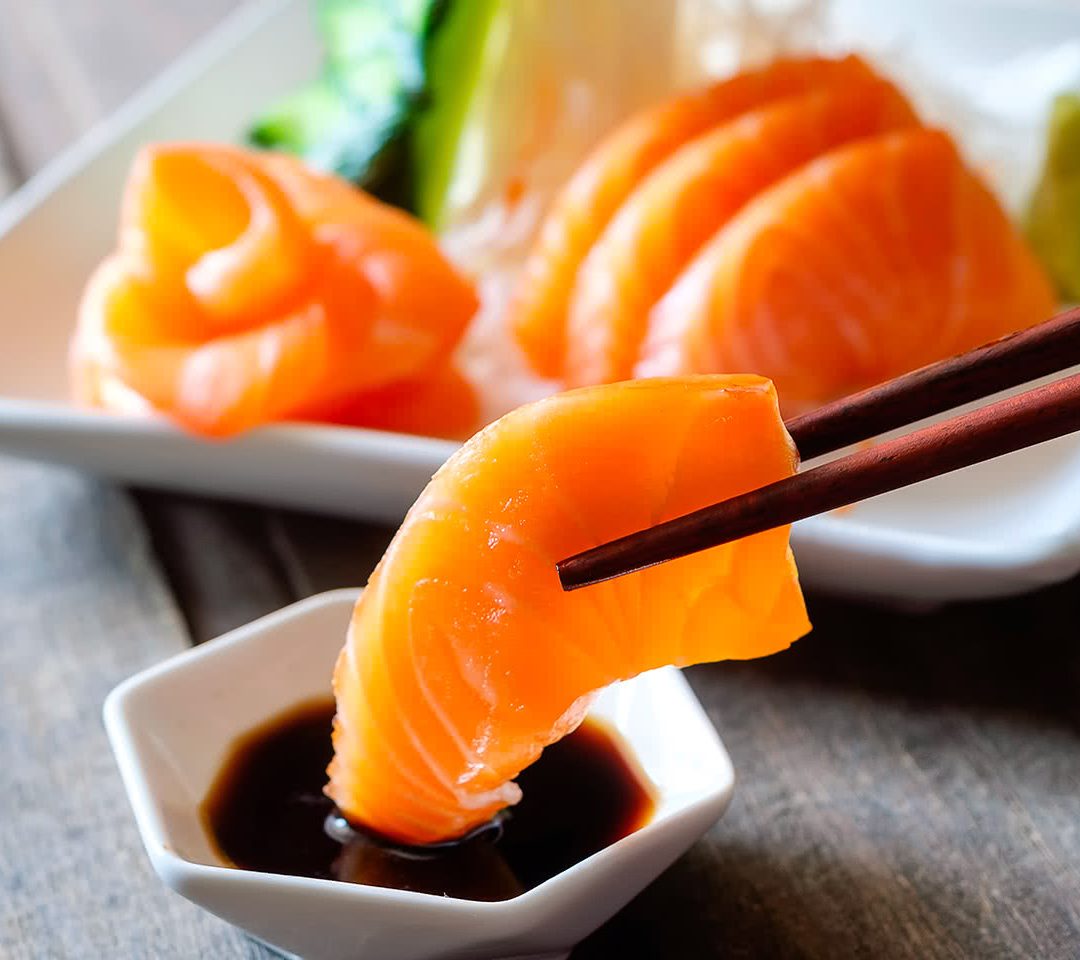
Sashimi
- What is sashimi?
- Did you know...
- How to make sashimi
- How to eat sashimi
- Difference between sushi and sashimi
- Also try
-
Kitchen Japanese cuisine
-
Basis Meat / fish
-
For who Adventurous eaters
-
Spiciness pepper pepper pepper
What is sashimi?
Sashimi (pronounced säshĭmĭ) is a Japanese dish of raw fish, often thinly sliced, served in portions of around five slices or pieces. It literally means “pierced body.” Sashimi is served in the traditional way on finely chopped daikon, sometimes with pickled ginger and a shiso leaf. A dip of salty soy sauce and some hot wasabi complete the dish.
The dish is made from the freshest fish that can be found. In Japan, a country surrounded by the sea, fresh fish is not as hard to find as in some other parts of the world, which is why the Japanese are masters in serving raw fish. In addition to sashimi, they also serve raw fish with sushi rice (sushi), for example in the form of nigiri or maki.
Well-known fish species served as sashimi are tuna, salmon, mackerel, bonito, squid, octopus (raw or poached), shrimp and scallop. Meat can also be served as sashimi. Horse meat sashimi (basashi) and deer meat (shikasashi) are common examples.
Did you know...
Today, sashimi is served in Japanese restaurants around the world in a pretty authentic way.
How to make sashimi
Sashimi always starts with a fresher-than-fresh fish. In Japan, some restaurants still have the fish kept alive in tanks until the sashimi is ordered. The knife is also important – sashimi chefs have special knives that are ultra-thin, extremely sharp and quite long. They are used exclusively for cutting fish meat. The raw fish is cut into regular slices, usually about half an inch thick – a technique that is called hirazukuri. Usuzukuri are extra thin slices, while kakuzukuri are cubes. Different types of fish and seafood each require their own special cutting technique, depending on the firmness and structure of the fish meat.
Sashimi is served with a small dish of shoyu (soy sauce) as a dip.
How to eat sashimi
Sashimi is served in traditional Japanese restaurants with other courses, so feel free to try it as an appetiser. Sashimi is always eaten with chopsticks and if you like heat, you can put a dot of wasabi directly on the fish.
Difference between sushi and sashimi
Sashimi is a Japanese delicacy consisting of thinly sliced pieces of raw fish or meat. Sushi is a Japanese cuisine of prepared vinegared rice (or sushi rice), accompanied by combinations of raw fish, vegetables, fish roe, and seaweed. Both sashimi and sushi are often eaten with soy sauce, pickled ginger, and wasabi.
Also try
If you want to try something even more challenging than raw fish, order ikizukuri, which means “prepared alive”. The fish is then not only raw, but even alive when the chef cuts the fish meat into sashimi. The sashimi is then served with the still-struggling fish next to it. It seems to yield the most delicious sashimi – and certainly also the freshest. But it is a pretty barbaric method to western sensibilities.
As a novice raw fish eater, choosing maki is recommended, as it is a form of sushi in which the amount of raw fish is relatively small.

